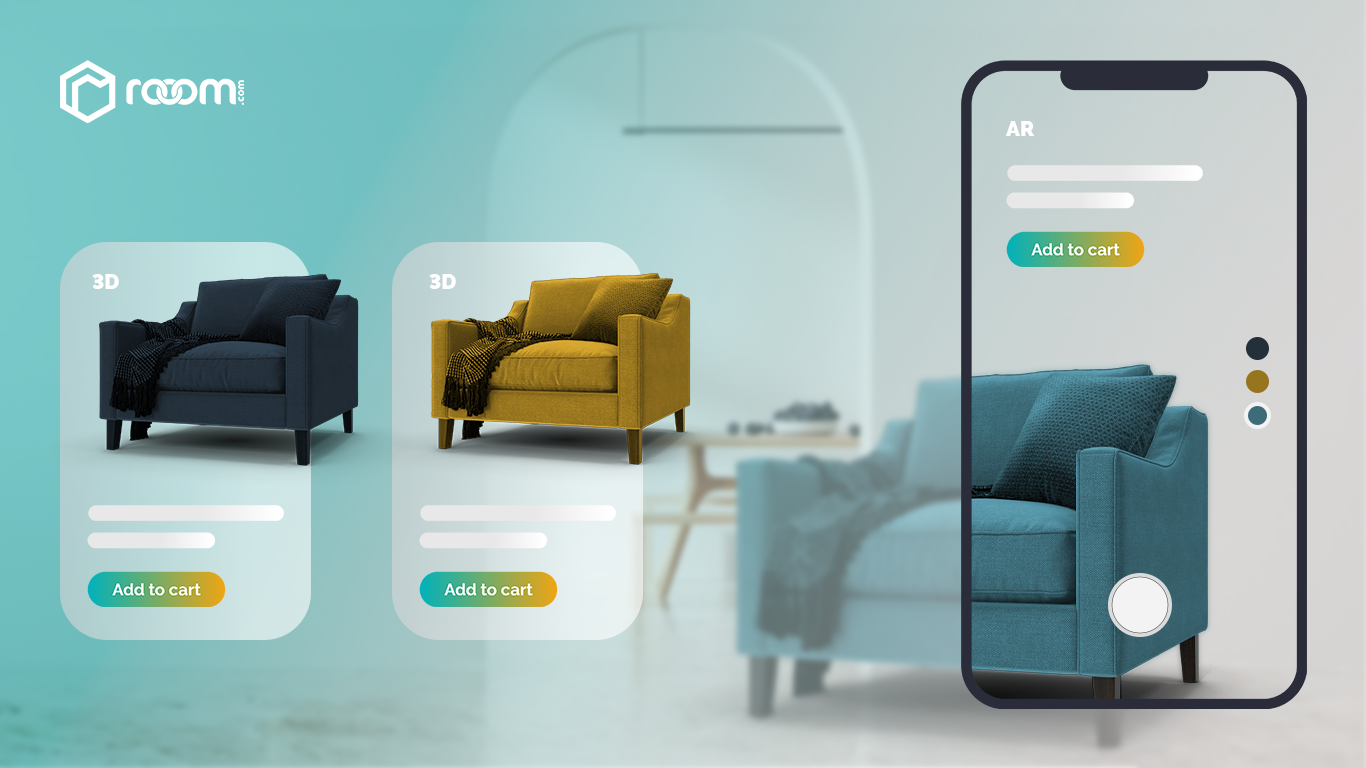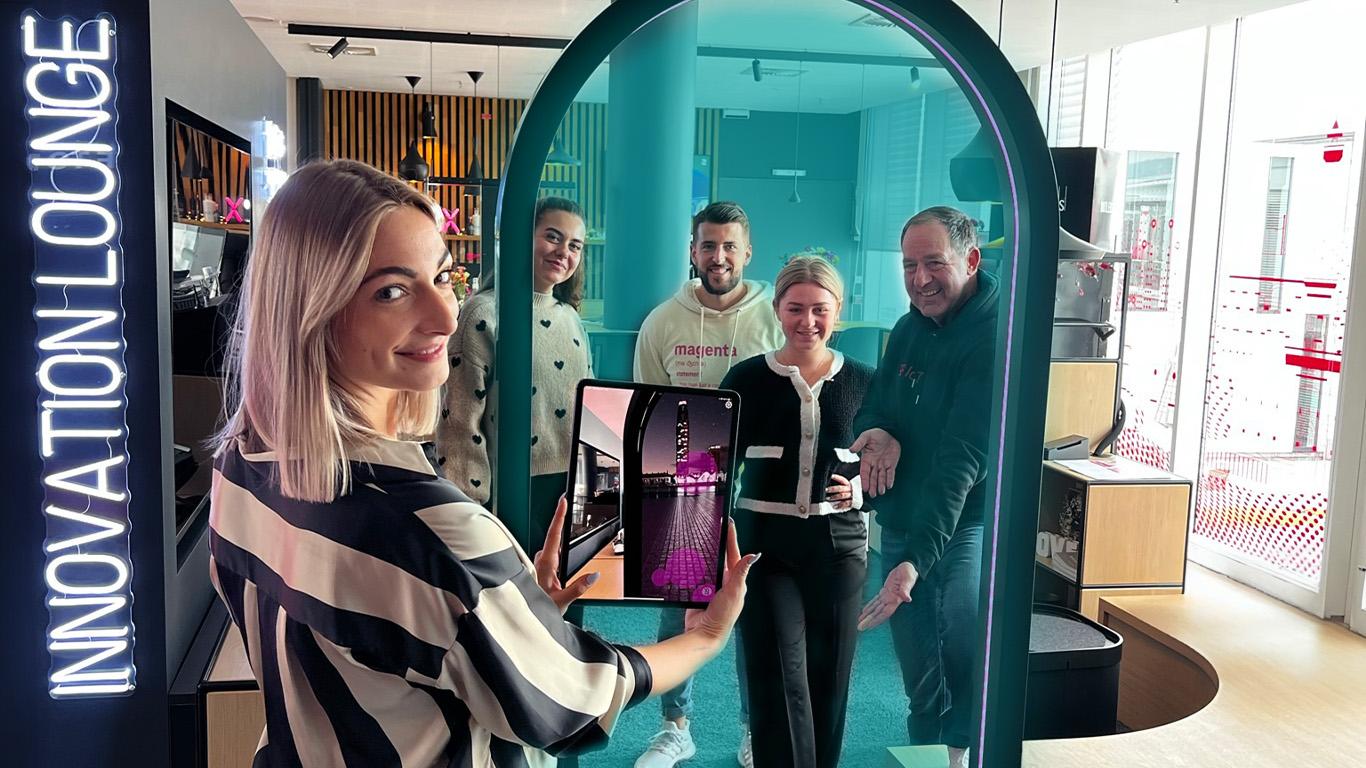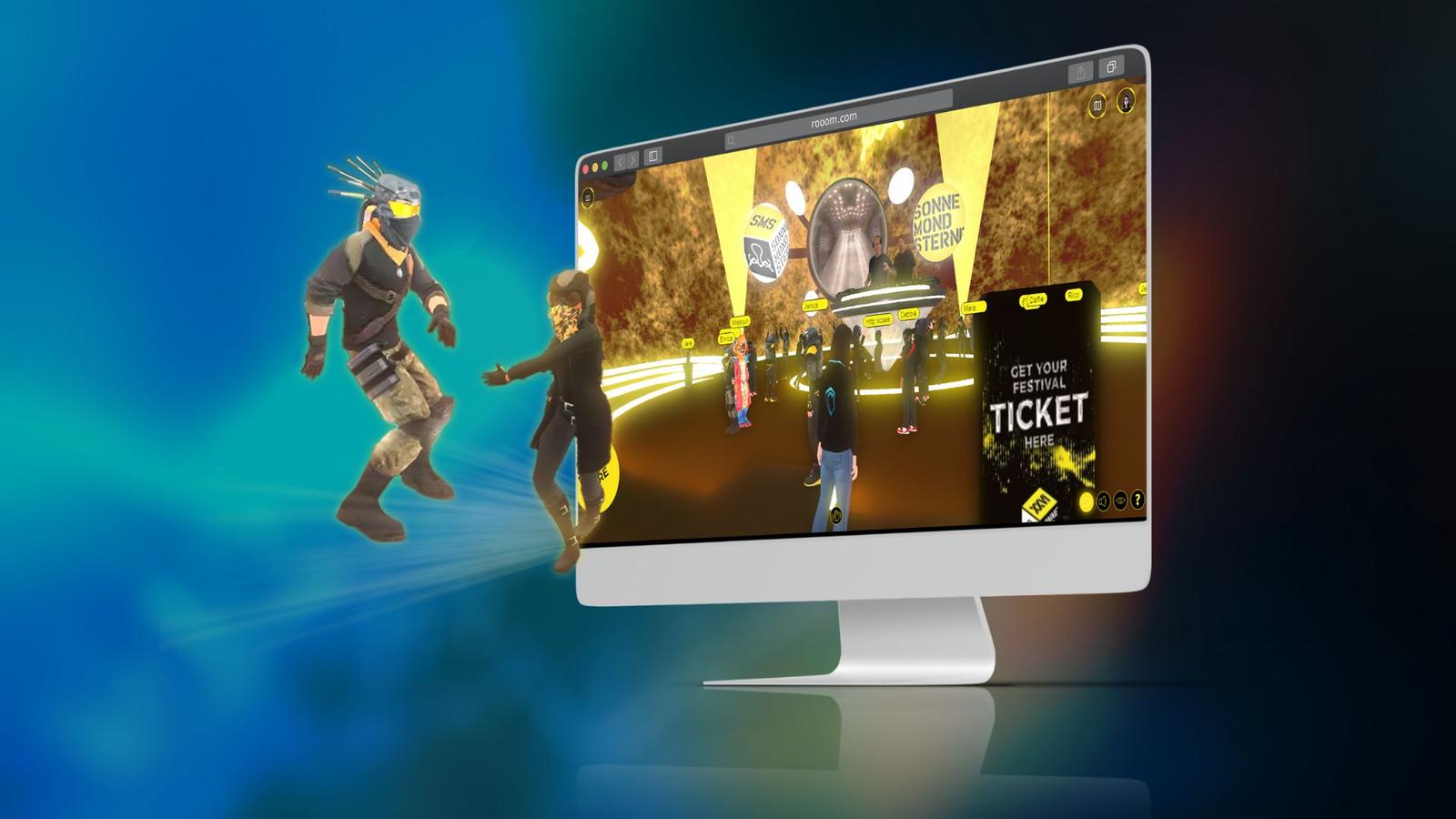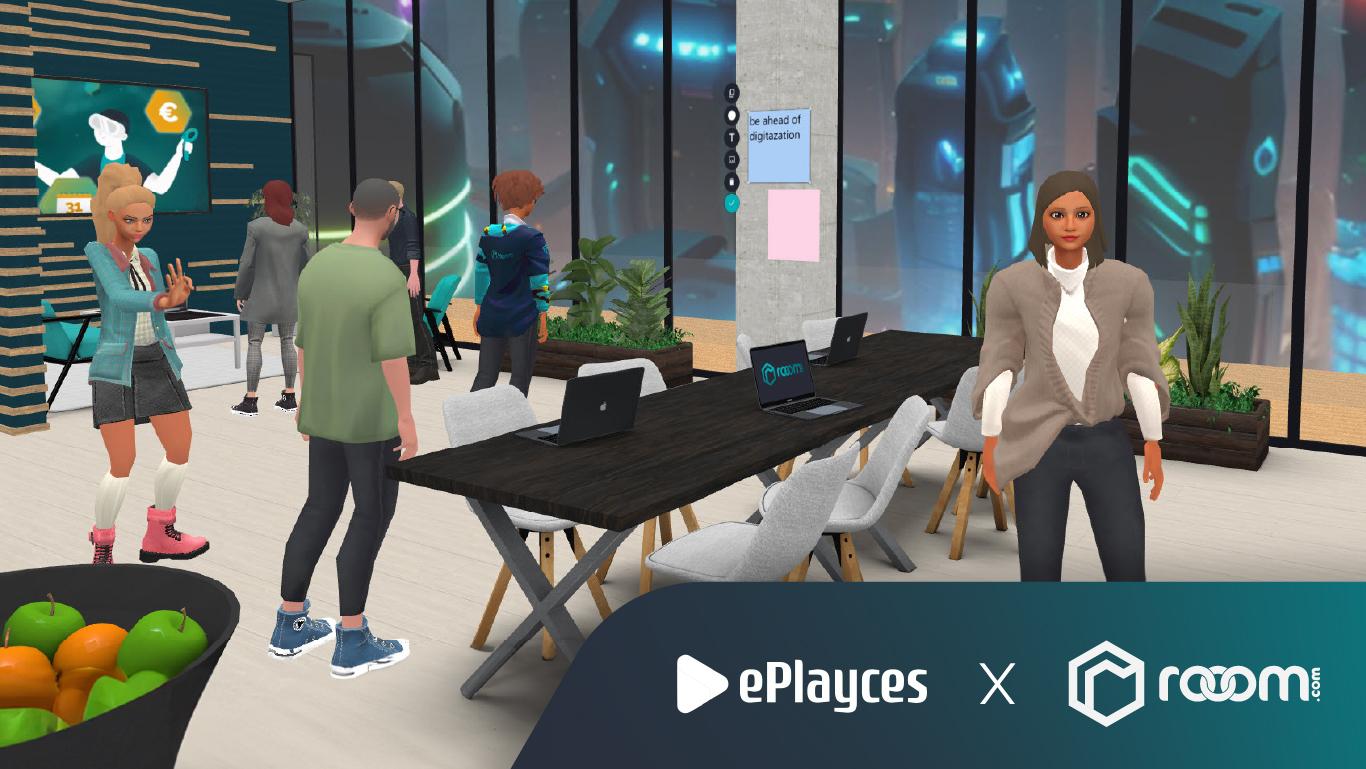Blog
NFT - What is it and what does it have to do with the metaverse?

- Hot Topics
- Blog
NFT - magazines, journals, blogs and webinars are full of articles about these three letters. Rarely does a tech topic cause such a stir among the general public as NFTs are doing right now. And even though NFTs are everywhere in the moment, you don't have a clue what exactly they are? Don't worry, you're not alone. In about 7 minutes, we'll at least get rid of the big question marks in your head and clarify the basic principle of NFT, blockchain and cryptocurrencies. Enjoy!
Non-Fungible Token – What is it?
In order to clarify what a Non-Fungible Token (NFT) is, it must first be clear what a token itself is: If you already know the term from the blockchain context, you know that Bitcoins, for example, are tokens. They are comparable to real money. And like real money, these tokens are exchangeable, i.e. fungible. Simply put, a Bitcoin is just as good as any other Bitcoin. Just like it doesn't matter if you pay a 5 Euro bill with one bill, multiple coins, or any other set of coins. The bottom line is 5 euros.
In the context of NFTs, tokens are digital property claims. Unlike Bitcoins, these are not arbitrarily exchangeable, i.e. non-fungible. Just think of the tokens here like an art object. You can't simply exchange a real Monet with the latest fingerpaint artwork of a three-year-old. A token like this is unique. And to ensure this uniqueness, a blockchain is used, as explained in the infobox on the left.
NFTs can be ownership rights to image files, to videos, or even to SMS. Gamers in particular are also familiar with non-fungible tokens from the world of online games, where fans have been able to buy wearables, i.e. items of clothing and accessories for avatars, for many years.
Definition: Web3 & Blockchain
Web3 is a new iteration of the Internet, shaped by decentralization and tokenization to prove ownership. This mechanism is hosted on a blockchain - a decentralized network where data is stored in encrypted form and not just on one server, but on several thousands simultaneously.
Like databases, blockchains store large amounts of information on interdependent blocks. The blocks are not all located in the same data center, but are distributed across different storage locations. It is best to imagine a blockchain like a string of pearls (Fig. 1). When a transaction occurs, the data for the purchase and a link to the NFT are stored on a new bead and threaded onto the existing chain. This ensures that everything is above board. How? Each individual bead has a digital fingerprint, a hash value, and also knows the fingerprint of the previous bead. In this way, the beads build strictly on each other, so that if someone changes something in the chain, it is immediately obvious. Then the entire sequence is no longer correct.
In addition to this strategy, every blockchain uses another security mechanism, e.g. Proof of Work. More about this later.

Cant't you just copy a NFT?
You can easily copy, record or screenshot image and video files at any time. If we take the real Monet as an example again here, however, a photo of the original painting is definitely not the same as the original itself. With a copied digital image, it's different. That is why NFTs are less about the acquired file itself and more about the official ownership of this file, which can be reliably traced via the blockchain. Nevertheless, several objects can of course also be declared as originals, as a limited edition, so to speak. Digital assets are particularly interesting for collectors and people looking for a new financial investment.
What is a NFT used for?
In principle, anyone who mines (i.e. creates) an NFT can determine for themselves what they declare to be a non-fungible token. Currently, however, NFTs are the talk of the town, especially as digital "art objects" and "collector's items. On large platforms such as Open Sea, countless graphics, virtual trading cards and even musical pieces are available for purchase. Where do these collectibles come from? Artists, brands or even celebrities create the digital assets, store them in the blockchain and offer them for sale. There are definitely creative approaches to this. The band Kings of Leon, for example, has sold its new album exclusively on OpenSea.
Another form of NFTs are virtual land areas or buildings. In the Next Earth project, for example, it is possible to buy property rights for certain areas on a digitally recreated earth. What for? For example, as a marketing idea by using the purchased area as advertising space. Similarly, other platforms can sell their virtual lands. On rooom, for example, buildings, showrooms or advertising space could be sold in theme-specific metaverse environments.
More than just digital art objects?
We currently hear about NFTs primarily in connection with digital art objects. However, the actual interesting application area of data structuring through NFTs offers the linking with real objects, such as real estate, cars, branded shoes or even certificates. Anyone who buys one of these objects also receives it as a virtual good and can use an NFT to prove that they are the rightful owner of the original. Nike, for example, has applied for a patent that makes the authenticity of sneakers traceable with the help of an NFT system.
Things get really exciting in the automotive sector. If a car owner has an NFT for his identity and his car and uses a car inspection workshop that also has an NFT, a car-owner-inspection data package can be put together with another NFT after the car inspection. This is then recorded for all eternity: This person owned the car with the following condition for this period. With the help of NFTs, states and processes can be brought into any context and then set in stone for all to read.
This also applies to digital certificates such as a bachelor's degree. In this way, it is possible to record who has written which thesis with which supervisor and when. Even the NFTs of the referenced papers can be stored! And all of this can then be viewed as a publicly verifiable data package. The potential of the technology is endless!

What is a cryptocurrency?
A cryptocurrency is a digital currency. Cryptocurrencies do not require an intermediate step via a financial institution for electronic transfers and can change hands directly. Since this means that there is no security from an independent third party (trusted third party), there needs to be another way to ensure that everything is above board: the blockchain. All data on holders and transactions is stored here in encrypted form. And not just on one server, but on several thousand simultaneously.
Besides the well-known Bitcoins, Ether on the Ethereum blockchain is currently the largest cryptocurrency for NFTs.
NFTs and the Metaverse
Instead of one big metaverse, there will probably be many small metaverses. We have already presented this approach in the blog post "Metaverse 2022". With multiple mini-metaverses will likely come multiple digital currencies. This is similar to how we cannot simply pay with euros when we visit Australia. However, we can buy a trading card in Germany with euros, take it with us to Australia and sell it again there for Australian dollars. It could look similar in the metaverses of various industries and areas of life one day.
Artists, for example, who have previously offered their digital artwork on NFT platforms, could instead exhibit their pieces in their own virtual showroom. There, they could invite people to virtual openings, track who is interested in the works, and negotiate the sale via the cryptocurrency of their artist metaverse.

In the business environment, a provider of jewelry and watches could, for example, create a metaverse in which virtual pieces of jewelry can be purchased. These can then be worn by one's own avatar and perhaps also taken to other metaverses. Visitors could receive the necessary coins, for example, for taking part in a product presentation, looking around a showroom, looking through a virtual brochure, or filling out a questionnaire.
In the event sector, it would be possible to buy digital tickets, badges or festival ribbons and use them as admission tickets in the digital world. Here, rooom is already working on initial ideas.
A very special area of application for NFTs is the fashion sector. Gamers have long been able to dress their avatars in various games themselves. Now there are even the first fashion brands that create purely virtual collections. And well-known brands like Gucci are also getting into the digital fashion business.
Communities in virtual worlds
In real life, communities are formed by people with the same interests, hobbies or goals. There are regulars' tables for learning foreign languages, meetings for amateur photographers, or paid memberships in sports clubs. Of course, such communities also exist in the digital realm. Players of certain games regard themselves as a community, subscribers to a blog or a YouTube channel form a community, or even members of an online portal for specialist topics. Communities are formed around NFTs that become a group simply by owning certain NFTs.
In the business environment, for example, with the rooom Web3 platform metaversesare possible on rooom in which employees and partners of a company can access certain content only with the help of NFTs. For example, employees could receive virtual badges and use them to attend training seminars. Key customers could receive digital invitations that allow them to visit additional rooms with special features. Those in the exclusive area know that there are only like-minded avatars around them and can network carefree. So NFTs can also be used for employee and partner retention. And why not for customer loyalty? They could also receive tickets to special areas when a project of a certain size is successfully completed.
Blockchains and Sustainability
Current discourses on NFTs often also focus on the topic of sustainability. But why? After all, a digital good doesn't consume any real resources, doesn't have to be sent halfway around the world in a package, and doesn't create any environmentally harmful waste, right? So half right.

In fact, NFTs call for significant computing power due to their linkage to a blockchain. This is related to security. For each transaction, a random number must be found by a member in the blockchain network, from which, together with all other transaction data, a predetermined value can be calculated, the nonce. The random number cannot simply be calculated using formula xy, but is determined by pure trial and error. Think of it a bit like trying to open the combination lock on a bicycle by systematically testing all possible number combinations. That takes a long time and costs a lot of energy. In the case of a blockchain, this is compounded by the fact that different instances within the network are calculating simultaneously. Whoever is fastest wins and gets to append the new block. This calculation is called Proof of Work and is the reason why NFTs require so much computing power. Manipulations are theoretically possible, but would require astronomical computing power due to this technique, as each link in the chain would have to be completely recalculated. Thus, the retrieval of large computing power is currently an important component of cryptocurrencies and NFT trading. According to cryptoart.wtf, an average NFT generates about 340 kWh, 211 Kg CO², i.e. the entire electricity consumption of an EU citizen for more than one month.¹
Can blockchains be more sustainable?
First of all, as already mentioned, there are various blockchains. There are already some that consume less energy than Euthereum, for example. How do they do that? They have alternative solutions for proof of work. One of those alternatives is proof of stake. Here, the participant with the greatest computing power does not win, but the winner is drawn by lot, so to speak. Only members who have a certain amount of cryptocurrency, a certain stake, are allowed to participate. In addition, other mechanisms are also in the works, such as Lightning technology. With its help, gigantic amounts of transactions can be bundled into a block without having to sign each one individually. It is therefore entirely possible that blockchains will be used much more sustainably in the future.
The conclusion - A little smarter than before?
The 7 minutes are up. We hope some question marks in your head have shrunk and you now have a rough idea of what this is all about with these NFTs. Yes? Great!
You want to create your own NFT collection?
With rooom, you get access to the essential tools to get started. We will be happy to advise you!














